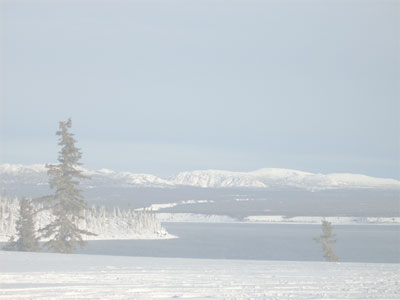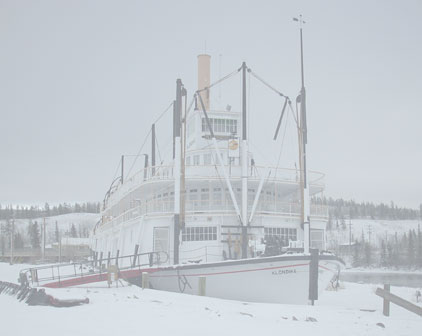
Along the western shore of Kluane Lake, the largest lake in the Yukon, are two of the territory's smaller communities, Burwash Landing and Destruction Bay. The communities are located in the Shakwak Valley, on the perimeter of Kluane National Park and the Tachal Region. Destruction Bay is on the highway, 19 km southeast of Burwash Landing and slightly closer to Haines Junction.
The town was established as a center for construction and maintenance on the Alaska Highway, and that remains its primary role today. The community of Destruction Bay earned its name from the high winds that buffet the area and destroyed buildings during the construction of the highway. The population as of 2005 was 59, mostly non-aboriginal. Its neighbor community, Burwash Landing, is the home of the Kluane First Nation of the Southern Tuchone People.
http://www.yukoncommunities.yk.ca
Books with more on Destruction Bay:
~ Huber, Thomas P., Carole J. Huber. “The Alaska Highway: A Geographical Discovery.” University Press of Colorado, 2000.
~ Maschmeyer, Gloria J., Alissa Crandall. “Along the Alaska Highway.” Alaska Northwest Books. 1991.
~ Stone, Ted. “Alaska and Yukon History Along the Highway: A Traveler's Guide to the Fascinating Facts, Intriguing Incidents and Lively Legends in Alaska's and Yukon's Past.” Red Deer College Press. 1997.
~ Brown, Tricia. “The World-Famous Alaska Highway: A Guide to the Alcan and Other Wilderness Roads of the North.” Fulcrum Publishing, Golden, Colorado. 2000.
Whitehorse
Whitehorse is the beautiful capital of Yukon Territory, and has a population of around 30,372 (Statistics Canada, 2006 Census). Its history is exciting, due to the Klondike Gold Rush of 1898. Whitehorse was founded in 1900 and became the major jumping off point for miners and prospectors on their way to the gold fields. At this time, there were under 1000 people living there. The capital was Dawson City, and it was more focused on mining, and the White Pass and Yukon Railroad train depot.
Following the completion of the highway, economic activity and the population shifted from Dawson to Whitehorse, and it became the capital on April 1, 1953.The city's location on the Yukon River and the Alaska Highway serves as the economic and traveling hub for the rest of the Yukon, and welcomes thousands of visitors every year. Though much of the Yukon remains wilderness, Whitehorse is a thriving arts and scholarly community.
Yukon Archives: http://www.tc.gov.yk.ca/75.html
City of Whitehorse: http://www.city.whitehorse.yk.ca/
Canadian Government Site: http://www.gov.yk.ca/
Books with more on Whitehorse:~ Huber, Thomas P., Carole J. Huber. “The Alaska Highway: A Geographical Discovery.” University Press of Colorado, 2000.
~ Maschmeyer, Gloria J., Alissa Crandall. “Along the Alaska Highway.” Alaska Northwest Books. 1991.
~ Stone, Ted. “Alaska and Yukon History Along the Highway: A Traveler's Guide to the Fascinating Facts, Intriguing Incidents and Lively Legends in Alaska's and Yukon's Past.” Red Deer College Press. 1997.
~ Brown, Tricia. “The World-Famous Alaska Highway: A Guide to the Alcan and Other Wilderness Roads of the North.” Fulcrum Publishing, Golden, Colorado. 2000.
